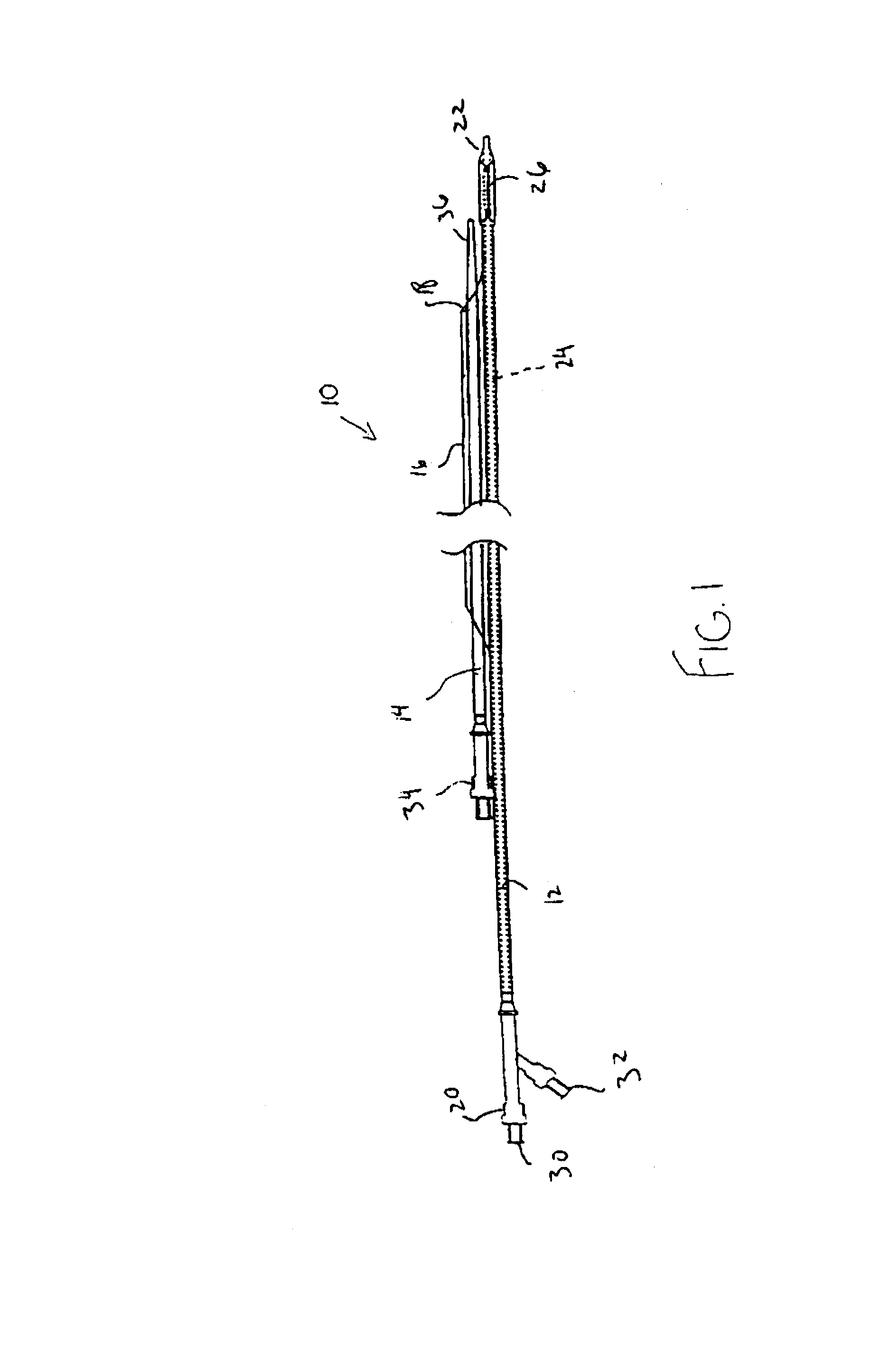Catheter with side sheath and methods
a side sheath and catheter technology, applied in the field of catheter systems, can solve the problems of limiting the ability to insert a branch stent into the side, compromising the patency of the main vessel and/or its branches, and generally produced in a straight tubular configuration, so as to facilitate the attachment of syringes and hinder the preparation of the device for use.
- Summary
- Abstract
- Description
- Claims
- Application Information
AI Technical Summary
Benefits of technology
Problems solved by technology
Method used
Image
Examples
Embodiment Construction
[0049]The present invention provides systems and methods for positioning a pair of guidewires in main and branch vessels at a vessel bifurcation to facilitate positioning and deployment of one or more stents, such as a main vessel stent or a branch vessel stent. The systems and methods may also be used to align a side hole in a main vessel stent in registry with the ostium of a branch vessel.
[0050]Applications of the invention include the cardiac, coronary, renal, peripheral vascular, gastrointestinal, pulmonary, urinary and neurovascular systems and the brain. Advantages of the invention include, but are not limited to, the use of an improved stent delivery apparatus, which may deliver main vessel and branch vessel stents to: 1) completely cover the bifurcation point of bifurcation vessels; 2) be used to treat lesions in one branch of a bifurcation while preserving access to the other branch for future treatment; 3) allow for differential sizing of the stents in a bifurcated stent ...
PUM
 Login to View More
Login to View More Abstract
Description
Claims
Application Information
 Login to View More
Login to View More - R&D
- Intellectual Property
- Life Sciences
- Materials
- Tech Scout
- Unparalleled Data Quality
- Higher Quality Content
- 60% Fewer Hallucinations
Browse by: Latest US Patents, China's latest patents, Technical Efficacy Thesaurus, Application Domain, Technology Topic, Popular Technical Reports.
© 2025 PatSnap. All rights reserved.Legal|Privacy policy|Modern Slavery Act Transparency Statement|Sitemap|About US| Contact US: help@patsnap.com



